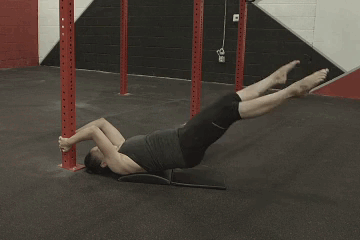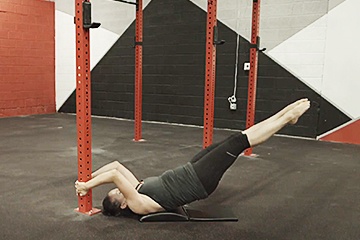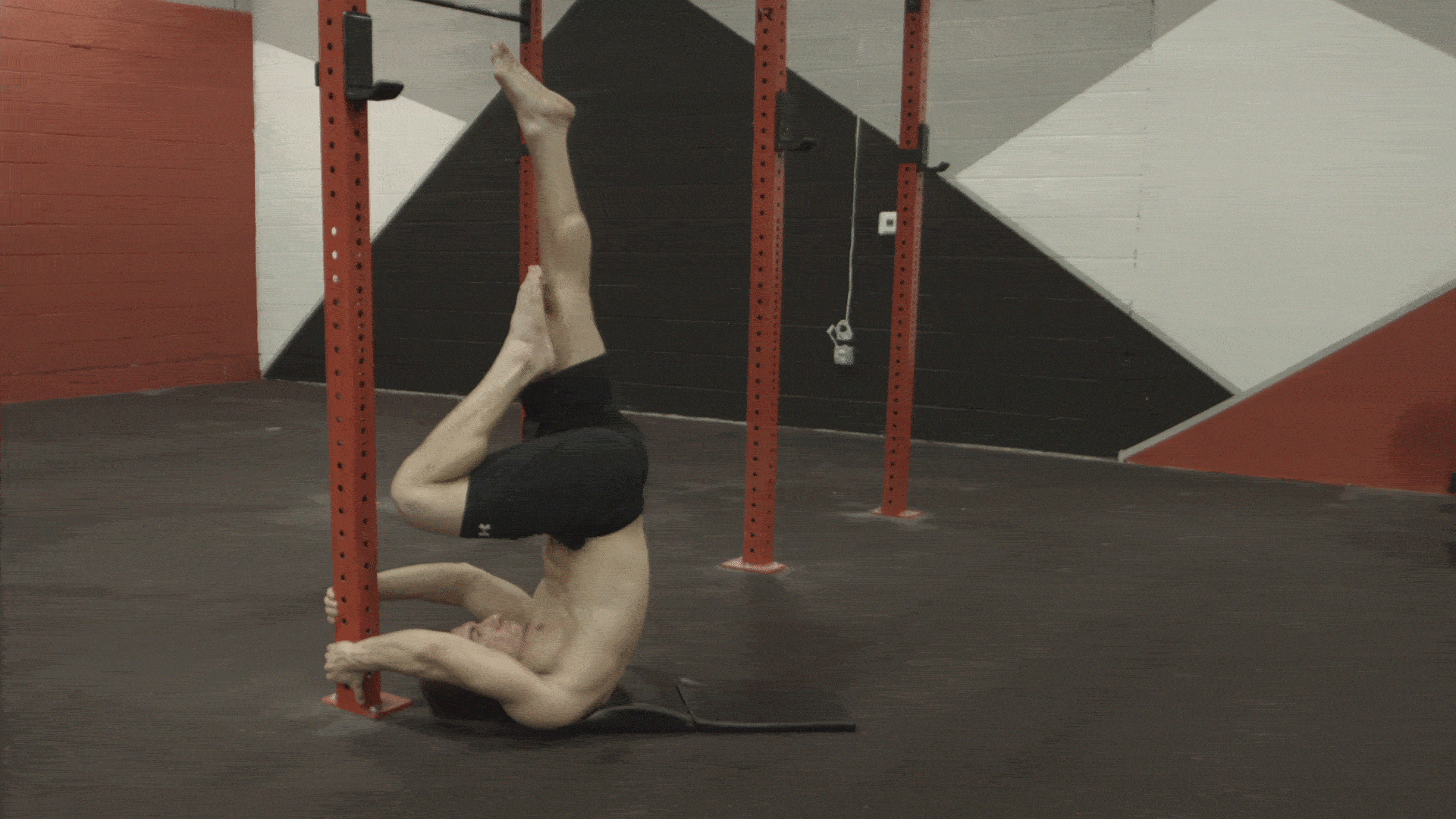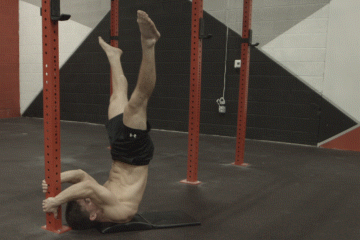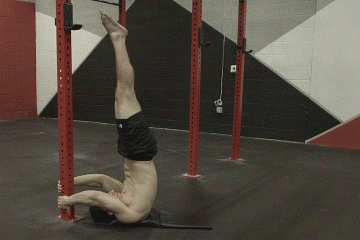Imagine being able to perform an exercise that not only tests your core strength but also makes you feel like a total powerhouse. That’s what the dragon flag is all about.
Yes, this move might look like something only advanced athletes can pull off, but guess what? With the right approach and mindset, you can learn it, too—even as a beginner.
Ready to unlock the secrets of this iconic move? Let’s dive in, and I’ll guide you every step of the way.👊
✨What is the Dragon Flag?
Before we jump into how to do the dragon flag, let’s first understand what it is.
Picture this: you’re lying flat on a bench or the floor, gripping something sturdy behind your head. Now, you lift your entire body up, straight as a board, until you’re practically hovering in the air.
Sounds impressive, right? That’s the dragon flag—a full-body move that challenges your core, shoulders, lower back, and even your legs.
But it’s more than just an ab workout. The dragon flag builds strength, control, and balance across your whole body. Bruce Lee was a huge fan of this exercise, and for good reason! Mastering it will improve your stability and coordination, which can help you excel in other fitness areas, especially calisthenics.
The good news? With a few foundational steps, you’ll be on your way to nailing this epic move.
Related articles:
- 📍 Elevate Your Core Fitness: The Complete Dragon Flag Breakdown
- 📍 Dragon Flag Progressions, Benefits, Requirements and Variations
🎯 Prerequisites: Preparing Your Body
Before we tackle the dragon flag head-on, ensuring your body is up for the challenge is essential. Think of it as setting the groundwork—without proper preparation, your progress could stall, and you risk injury.
So, let’s talk about what you need to focus on first.
Core Strength: The core is the powerhouse behind the dragon flag. You’ll want to strengthen it with basics like planks and leg raises. These will help you maintain control when you lift and lower your body.
Flexibility: Flexibility plays a bigger role in the dragon flag than you might expect. Keeping your hips and back flexible makes getting into the proper position easier without straining anything. Make sure to stretch out those muscles regularly.
Shoulder and Lower Back Stability: These areas often get overlooked, but they’re crucial for weight support. Exercises like scapular retractions and hollow holds will build the stability you need to succeed.
🙌 Step-by-Step Guide to Mastering the Dragon Flag
You’re probably eager to try the full dragon flag already, but hold on! The key to mastering this move is progression. Start with the basics and gradually work your way up. Let’s take it step by step, and before you know it, you’ll be on your way to performing the full dragon flag like a pro.
Step 1: Dragon Flag Tuck to Extend Straddle (High)
Let’s kick things off with the Dragon Flag Tuck to Extend Straddle. This variation helps you build strength in the top position and get used to extending your legs.
- Start by lying on your back near a stable base.
- Grip the support behind your head.
- Raise your lower body until your entire body is at around a 45-degree angle.
- Straddle your legs apart while keeping control.
- Shift your legs into a tuck position, then open the tuck by extending your legs.
- Repeat this leg movement for the specified number of repetitions while maintaining the rest of your body in position.
This progression is fantastic for teaching control and strength in both the tuck and extended positions. You’re working on the top of the movement, which will eventually build the power you need to hold the full dragon flag.
Step 2: Dragon Flag Tuck Extended
Now, let’s move to tucks with full extensions, a great way to build up the strength needed for the full dragon flag.
- Lie on your back near a base hold and grip the support.
- Raise your lower body until your body forms a 45-degree angle, keeping your legs straight.
- Tuck your knees into your chest.
- Straighten your legs again while keeping your body controlled in the same position.
- Repeat the leg movement for the specified number of repetitions.
This step builds your strength for holding your body straight and is crucial for moving on to more advanced progressions.
Step 3: Dragon Flag One Leg
Now that you’ve built some serious core and body control, it’s time to up the ante with the dragon flag one leg progression.
- Begin in a lying position with a firm grip on the base.
- Raise your lower body until you’re vertical.
- Tuck one leg while keeping the other leg extended straight.
- Lower your body down slowly, keeping a strong body line as you hover just above the ground.
- Repeat the motion for the specified reps, then switch legs and repeat.
This progression introduces the challenge of having one leg extended while still keeping control over your entire body. It’s a fantastic way to gradually increase the intensity without jumping straight into the full Dragon Flag.
Step 4: Dragon Flag Straddle
The nextl step before reaching the full dragon flag is the straddle variation. The wider your legs, the shorter the lever, making this an easier progression than the full position.
- Start in a lying position and grab hold of your base.
- Raise your lower body until you’re vertical.
- Position your legs in a wide straddle to shorten the lever.
- Lower yourself down while maintaining a strong body line, just like the full Dragon Flag.
- Repeat the movement for the specified number of reps.
The straddle position helps you get used to the full range of motion without the full difficulty of the Dragon Flag. It’s a powerful step toward conquering the complete move!
Step 5: Full Dragon Flag
Finally, it’s time to tackle the full Dragon Flag! By now, you’ve built the necessary strength and control to perform the move in its entirety.
- Lie flat on your back and grip a sturdy base.
- Raise your lower body and straighten your legs so that your entire body is in a straight line from shoulders to toes.
- Keep your body rigid as you lower yourself toward the ground, maintaining a straight, controlled descent.
- As your hips hover just above the ground, reverse the motion by lifting your body back up.
- Repeat for the specified number of repetitions.
This is the full expression of the dragon flag—a straight body, controlled motion, and no momentum. It’s an actual test of your core strength and body control, and reaching this point is incredible.
So, what’s next? It’s all about practicing smart and staying consistent, and one way to ensure you’re progressing efficiently is by using The Movement Athlete app (TMA).
TMA offers personalized training plans that adapt to your current strength level and goals, helping you stay on track. Whether you’re just starting with the dragon flag progressions or working on the advanced stages, The Movement Athlete tailors exercises to your abilities, ensuring you’re building strength safely and effectively.
🔥 Training Tips for Success
Mastering the Dragon Flag takes time, but with the right mindset, you’ll get there. Here are a few tips to make sure you stay on the path to success:
- ✅ Progress Gradually: Don’t rush! Take time with each step, and only move on when you feel confident. The goal is quality over quantity.
- ✅ Train Smart: Aim to practice the dragon fFlag several times a week. You don’t want to overtrain, which can lead to injury or burnout. Listen to your body and give it time to recover.
- ✅ Rest and Recover: Speaking of recovery, it’s just as important as training. Your muscles need time to rebuild and strengthen, so ensure you’re getting enough rest. And don’t forget to stretch—keeping your body flexible will help you stay injury-free.
As you continue practicing, remember that every small win is a step closer to mastering the full Dragon Flag. Stay patient, and don’t be afraid to celebrate the little victories.
🧐Frequently Asked Questions
🔎 Is the dragon flag easy?
The Dragon Flag is challenging, especially for beginners. It requires significant core strength, body control, and stability. However, with the right progressions and consistent practice, anyone can work up to performing the full Dragon Flag. Start with basic exercises like planks and leg raises to build a solid foundation before moving on to more advanced variations.
🔎 How often should I do dragon flags?
You should aim to practice Dragon Flags 2-3 times per week. It’s important to allow your muscles time to recover between sessions to prevent overtraining and injury. Focus on quality over quantity, performing the exercise with perfect form rather than rushing through repetitions.
🔎 Are dragon flags safe?
Yes, dragon flags are safe when performed with proper form and gradual progression. However, it’s crucial not to rush into the full movement if your body isn’t ready. Starting with easier progressions will help build the necessary strength and control, reducing the risk of injury.
⚡️ Final Thoughts
Learning the dragon flag is like climbing a mountain—it’s challenging, but the view from the top is absolutely worth it. It’s not just about nailing the move; it’s about the journey of building strength, control, and confidence. With consistent practice and a step-by-step approach, you’ll unlock this epic calisthenics move quickly.
Ready to take the next step? Why not try a personalized training plan with The Movement Athlete? It’ll help guide you through every stage of your Dragon Flag journey and beyond so you can crush your fitness goals.

